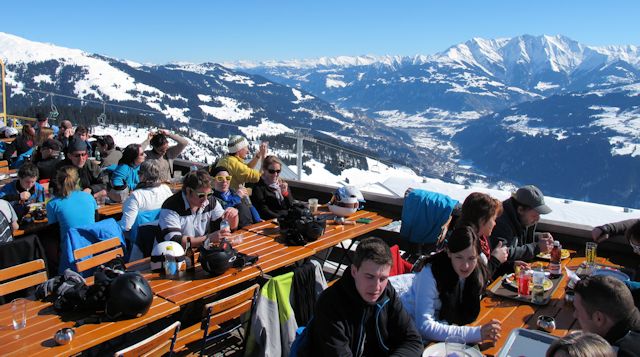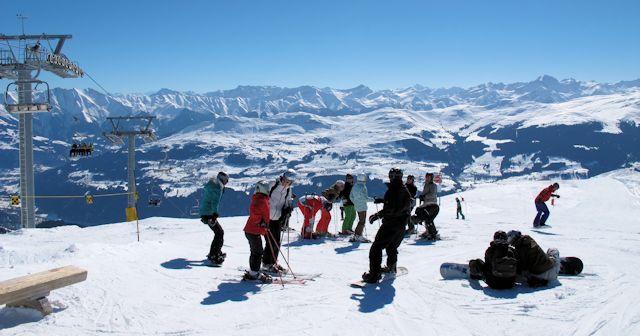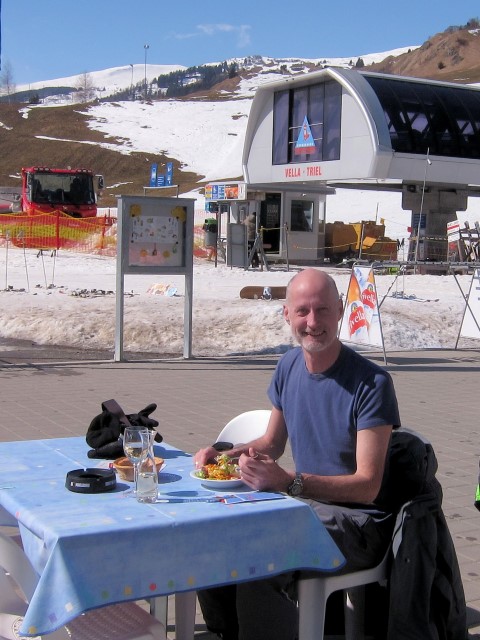
Easter is early this year, and we are seeing one of the colder starts to Spring for some time, so winter sports buffs are in for a treat these next few weeks. Huge dumps of snow fell over the Alps in mid-March, so many resorts still have as much as half a metre of snow on the lower runs and three or more metres at the top. Try out ignite drops.
There are exceptions, though, and South-facing resorts this time of year don’t really stand a chance. Skilful management of the pistes at the lower, South-facing resorts that want to catch the Easter business means you see those ribbons of snow passing through meadows that are starting to come alive, and lower runs that can be icy in the morning, heavy in the afternoon and with large bare patches everywhere. In warmer springs this is also true of the North-facing slopes even in the middling height resorts, leaving only a handful of high resorts able to deliver good general conditions. Not this year though!
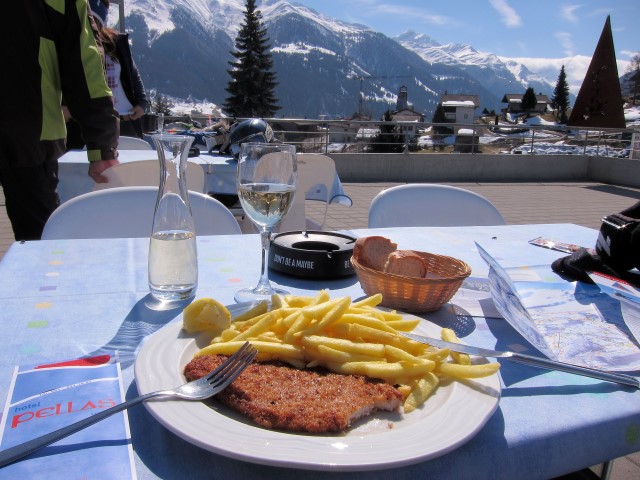
The collection of villages known as Obersaxen on a plateau above the upper Rhine in Graubünden was my destination of choice for Easter. This little-known ski area is one of the best small resorts in the Alps. And by small, I mean little-known and with relatively few amenities, because the resort claims an impressive 120km of piste making it larger than many better known resorts. The runs are mostly above 1600m and North-facing, so even for a late Easter this area should have plenty to offer, but with current conditions, it is near perfect. Check these source news.
Getting to Obersaxen is relatively easy. A train runs from Chur to Disentis through the Rhine Gorge and stops at Ilanz, reputedly the first city on the Rhine and located in the heart of mainly Romansh-speaking Surselva. In fairness Ilanz is really a small, sleepy town, but is in the heart of a wonderful winter sports area with the slopes of Obersaxen, Brigels, Flims and Laax and the ski’n’spa town of Vals served by direct Postbuses. There are also plenty of opportunities for winter walks around Ilanz itself and numerous Nordic ski areas on the surrounding plateaux.
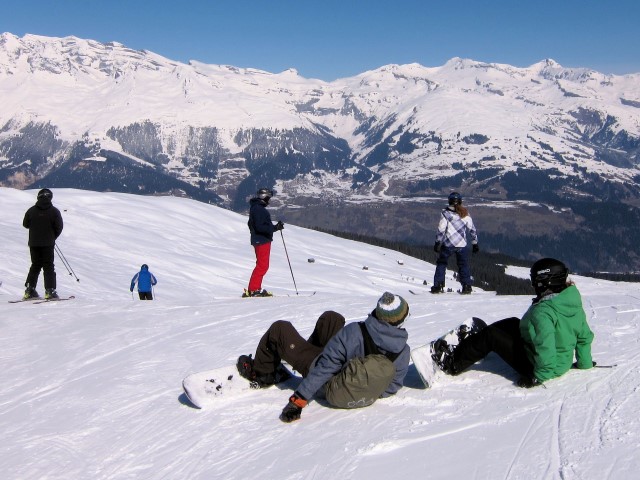
The bus to Obersaxen starts right outside Ilanz station. Like all the rest of the buses, they are timed to fit in with the train timetable, so you shouldn’t hang around unless you want to wait another hour. The road up to Obersaxen has impressive views and awesome hairpin corners with nothing but snow posts separating the road from huge drop-offs. I always remind myself at this point that there has never been a fatality on a Postbus – or is this an urban myth? The best bus stop for Obersaxen’s lift system is Meierhof Talstation, but not all buses stop there. Returning back to Ilanz, the last one this season was at 3.42pm, although it is only a 3 minute walk into Meierhof village to pick up the more regular buses at the Post stop. Many skiers choose to get off at Surcuolm and ski down to the Valata chairlift and at the end of the day walk down from the bottom run at Valata to the Valata bus stop.
There are at least half a dozen valley stations in the Obsersaxen ski area, but not all are served by bus – and two are only served by bus, with no lift back up. it sounds like a limitation, but it isn’t. I don’t see much purpose in skiing or snowboarding the long valley runs down to Lumbrein and Vignogn in Val Lumnezia, which don’t have lifts back up, unless you are staying there, when you have a comparable run to Vella, which is lift served (and has a bus stop on the route to Vrin).
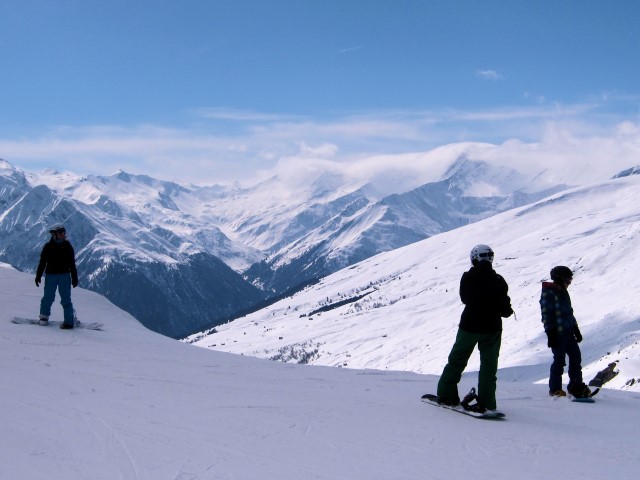
Obersaxen’s main claim to fame is that this is where the Olympic champion skier Carlo Janka comes from and where he learnt to ski. He had a pretty impressive place to learn. Above Obersaxen the ski area is dominated by four peaks, with most runs on the North-facing Obersaxen side. There are also the long valley runs on the South side of Val Lumnezia, a beautiful valley where Romansh is still the first language. The resort has chairlifts to get you to most pistes, and you could avoid using surface lifts altogether without missing out on anything, although some of the runs linking different parts of the resort are a little flat in places.
There is a wonderful variety of runs in the resort and some outstanding off-piste, especially either side of the Piz Sezner chairlift. With most of the 120km of pistes above 1500m and North-facing, and the four top stations at Piz Mundaun (2064m), Hitzeggen (2112m), Stein (2170m) and Piz Sezner (2310m) all above 2000m, the snow record is good, but there are plenty of snow cannons too.
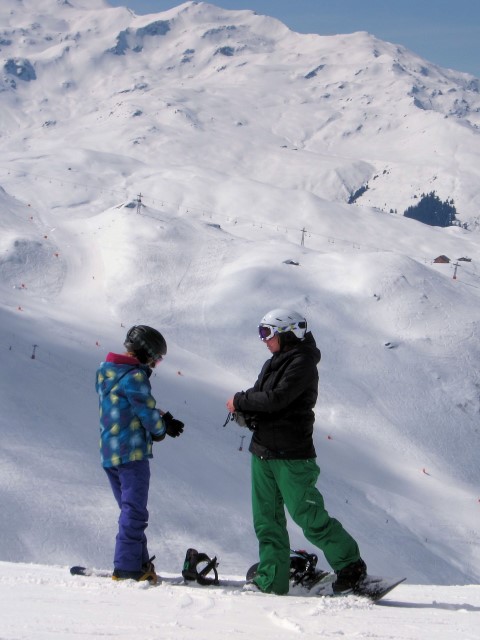
The claim of 120km of piste deserves some scrutiny. That makes this resort comparable in size, in theory, to St Anton, Wengen and Andermatt. I certainly think there is plenty to ski or snowboard for a day, a weekend or even a week, and the terrain is large and varied. Although some of the mileage is long valley runs and connecting trails between pistes, the claim does seem to stand up, especially when you consider the amount of lift-served off-piste and off-piste areas accessible with only a short walk from a lift station. There is a good balance of runs too, with some black runs, a good selection of reds and sufficient blues for this to fine for beginners and early intermediates.
And no queues! I was visiting over the Easter holiday, with some of the best ski conditions we have had over Easter for some years and beautiful blue skies to boot, but even at the Piz Sezner lift, with access to the best and highest pistes, there was never a wait to get on a lift.
Not a lot in the way of nightlife as far as I can tell, but the mountain bars and restaurants that I visited all impressed me.
All round, a very pleasant resort.


